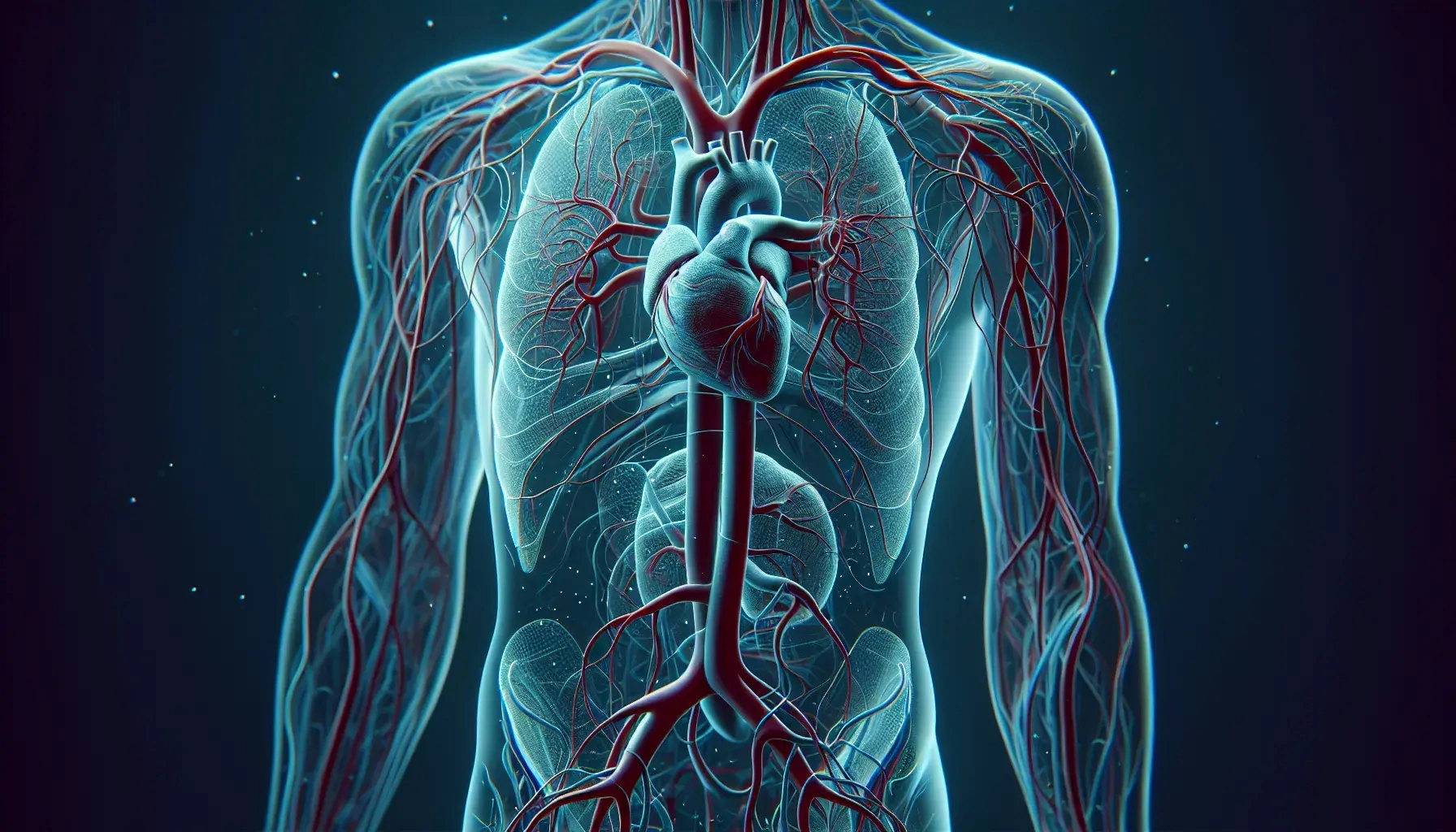The human cardiovascular system, an intricate network of blood vessels, heart, and blood, is a marvel of nature. It's a ceaseless machine, working tirelessly to keep us alive and healthy. This blog post aims to shed light on the complexities of this vital system, unraveling its mysteries and helping you understand its workings better. We will delve into the heart's structure, the blood vessels' role, and the blood's journey throughout the body.
The Heart: A Pump at the Center
The heart, a muscular organ roughly the size of a fist, sits at the center of the cardiovascular system. It acts as a pump, pushing blood through the body's vast network of blood vessels. The heart's structure is complex, divided into four chambers: two atria on top and two ventricles at the bottom.
Blood enters the heart through the atria. The right atrium receives deoxygenated blood from the body, while the left atrium gets oxygen-rich blood from the lungs. The ventricles, on the other hand, are responsible for pumping the blood out of the heart. The right ventricle sends blood to the lungs for oxygenation, and the left ventricle pumps oxygenated blood to the rest of the body.
The heart's rhythm is controlled by electrical signals. These signals start at the sinoatrial node, or the heart's natural pacemaker, causing the atria to contract. The signal then travels to the atrioventricular node, triggering the ventricles to contract. This sequence of contractions results in the heartbeat we can feel.
Blood Vessels: The Transport Network
The blood vessels form a vast network that spans the entire body. They are the highways of the cardiovascular system, carrying blood to every cell. There are three types of blood vessels: arteries, veins, and capillaries.
Arteries carry blood away from the heart. They have thick, muscular walls to withstand the high pressure of blood pumped by the heart. The largest artery, the aorta, branches out into smaller arteries, which further divide into arterioles and then into capillaries.
Capillaries are the smallest blood vessels. They connect arterioles to venules and facilitate the exchange of oxygen, nutrients, and waste materials between the blood and the body's cells.
Veins, on the other hand, carry blood back to the heart. They have thinner walls than arteries and contain valves to prevent the backflow of blood. The process of blood returning to the heart is aided by the contraction of skeletal muscles during movement.
Blood: The Life-Giving Fluid
Blood, the fluid that circulates through the cardiovascular system, is the life-giving substance. It carries oxygen and nutrients to the body's cells and removes waste products. Blood is composed of red blood cells, white blood cells, platelets, and plasma.
Red blood cells, or erythrocytes, carry oxygen from the lungs to the body's cells. They contain a protein called hemoglobin, which binds to oxygen and gives blood its red color.
White blood cells, or leukocytes, are the body's defense mechanism. They fight off infections and diseases by attacking foreign substances and organisms that enter the body.
Platelets, or thrombocytes, are responsible for clotting. They gather at the site of a wound, forming a clot to stop bleeding.
Plasma, the liquid part of the blood, carries cells and platelets. It also transports hormones, nutrients, and waste products.
The Blood's Journey: A Continuous Loop
The journey of blood through the cardiovascular system is a continuous loop, starting and ending at the heart. The heart pumps deoxygenated blood to the lungs via the pulmonary artery. In the lungs, blood picks up oxygen and releases carbon dioxide, a waste product of cellular metabolism.
The oxygenated blood then returns to the heart and is pumped to the body via the aorta. As blood travels through the body, it delivers oxygen and nutrients to cells and picks up waste products.
After delivering oxygen, the now deoxygenated blood returns to the heart, completing the loop. This process, known as circulation, happens thousands of times each day, ensuring that every cell in the body gets the nutrients it needs and that waste products are removed.
Disorders of the Cardiovascular System
Despite its efficiency, the cardiovascular system is not immune to disorders. These can range from congenital defects, present at birth, to acquired diseases that develop over time.
Coronary artery disease, the most common cardiovascular disorder, involves the narrowing of the coronary arteries, reducing blood flow to the heart. This can lead to chest pain, shortness of breath, and even a heart attack.
Hypertension, or high blood pressure, is another common disorder. It occurs when the force of blood against the artery walls is too high, putting extra strain on the heart.
Congenital heart defects, such as a hole in the heart or a malformed valve, can disrupt normal blood flow. These defects can range from mild, requiring no treatment, to severe, requiring surgery or other interventions.
Maintaining Cardiovascular Health
Maintaining cardiovascular health is crucial for overall well-being. Regular exercise, a balanced diet, and avoiding harmful habits like smoking can all contribute to a healthy cardiovascular system.
Exercise strengthens the heart, improves circulation, and lowers blood pressure. A diet rich in fruits, vegetables, lean proteins, and whole grains can help maintain healthy blood vessels and prevent atherosclerosis, the buildup of fatty deposits in the arteries.
Regular check-ups can also help detect cardiovascular disorders early. Early detection and treatment can prevent complications and improve quality of life.
Unraveling the Mysteries of the Cardiovascular System
The human cardiovascular system, with its intricate network of blood vessels, heart, and blood, is a marvel of nature. Understanding its workings can help us appreciate the complexity of our bodies and the importance of maintaining cardiovascular health. By taking care of our cardiovascular system, we can ensure that this ceaseless machine continues to keep us alive and healthy.

